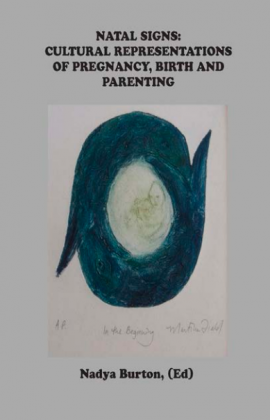New Chapter Publication on Birth, Art, and Ritual, by Anna Hennessey
I am happy to announce that one of my essays on birth art will appear as a chapter in the forthcoming Demeter Press publication, Natal Signs: Cultural Representations of Pregnancy, Birth and Parenting, currently available for preorder. My interactions with the artwork and artists covered on Visualizing Birth was inspirational in this project. For this month’s blogpost, I am including the full abstract to the chapter.
Representations of Birth and Motherhood as Contemporary Forms of the Sacred
This paper examines ways in which images of birth and the maternal body are contemporary forms of the sacred, and, controversially, how their production represents a renewed interest in birth and mothering as primary sources of empowerment for many women. Through research in art history, religious studies, philosophy, medical anthropology, and feminism, I first show how members of an international movement devoted to birth and art are actively using religious, secular, and re-sacralized art imagery in the visualization of labour and birth and as a ritualistic part of birth as a rite of passage. While this process of ritualizing art objects is interesting in itself, the focus of the paper then shifts to explore how these images communicate a celebration of birthing and maternal bodies. Emerging from this celebration is a renewed model of feminism that considers physiology, acts of childbirth, and mothering as foundational for the empowerment of many women. This model diverges from dominant forms of feminism that point to the problem of birth and motherhood as negatively related to biological essentialism. Anti-essentialism in feminism grew in part as a reaction to the alternative birth movement of the late twentieth century, and it has been highly influential not only within women’s studies and feminist discourse but across the humanities. I contend that a logical fallacy is at the heart of these critiques and examine how they have played a part in silencing academic discourse on childbirth, female physiology, and maternal experiences.[i] Contemporary representations of birth and motherhood act as a powerful material means of reinvigorating these discussions.
[i] The silencing of these topics in academia is complex and has many causes. In this paper, I do not map out all of these causes but will do so in a talk (“Uncovering the Topic of Childbirth in Art, Religion, and Philosophy”) at the XXI World Congress of the International Association for the History of Religion (August 2015).
